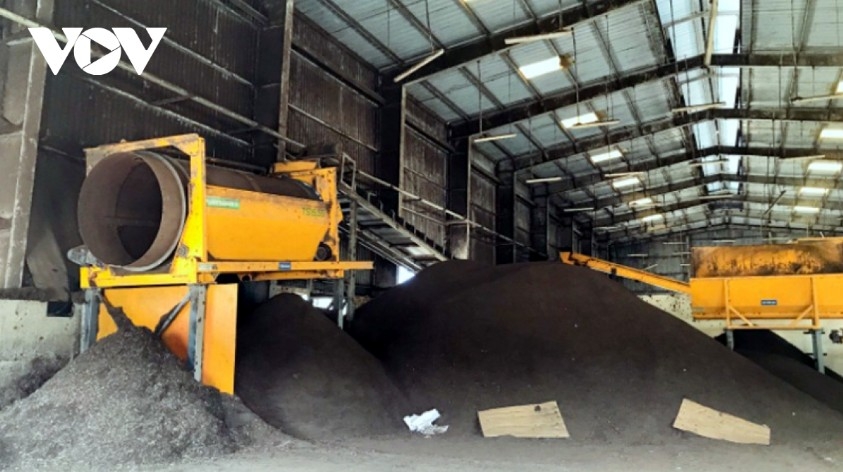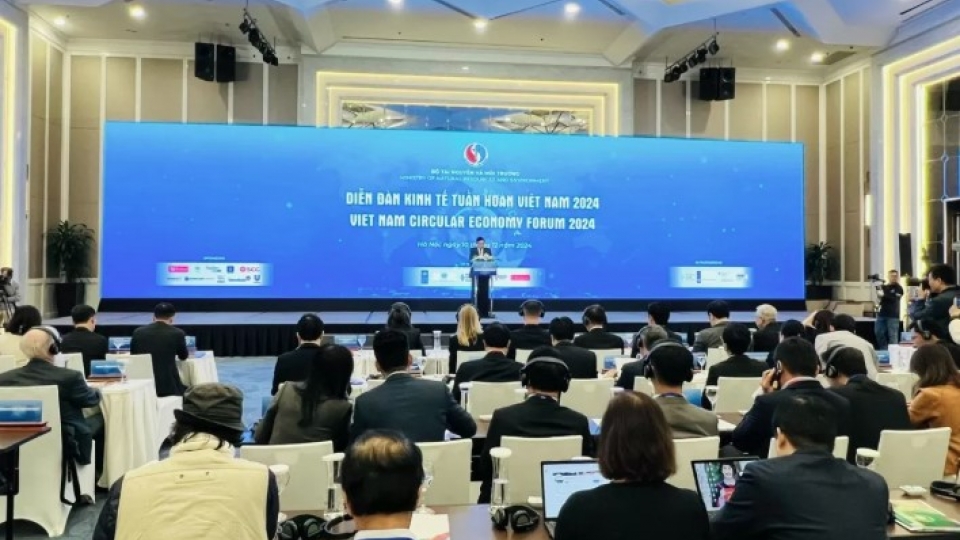Vietnam embraces circular economy for green, sustainable growth
VOV.VN - Vietnam possesses a vast biomass resource, estimated at more than 150 million tons of agricultural by-products and waste annually, yet the country’s average recycling rate remains around 40%-50%.

Despite this potential, implementing a circular economy (CE) in Vietnamese businesses still faces major barriers, including high initial investment costs for technology and logistics infrastructure, a lack of effective markets for recycled materials, fragmented and inconsistent legal frameworks, and limited professional awareness of CE practices.
Turning circular economy into action
Assessing CE adoption can extend resource lifecycles, reduce emissions and costs, and help businesses improve efficiency.
Associate Professor Dr. Bui Quang Tuan from the Vietnam Institute of Economics and the Vietnam Academy of Social Sciences (VASS) noted that CE promotes green energy use, contributes to environmental sustainability, and supports climate change mitigation.
A current strength of CE lies in its application of advanced, digital, and smart technologies, which increases both the quantity and quality of products without raising costs, thereby enhancing competitiveness. It also fosters new product creation through redesign, promoting green products and value chains to penetrate and capture the market.
“CE requires stronger collaboration in production, enabling businesses to integrate more deeply into global value chains, a current gap in Vietnam. Circular practices reduce environmental pollution and greenhouse gas emissions, improve growth quality, support climate resilience, and foster a green innovation ecosystem alongside digital transformation,” Dr. Tuan said.
In the CE mindset, all materials can be regenerated or reused. Particularly in agriculture, there is no waste, only untapped resources. Dr. Trieu Thanh Quang from he Vietnam Institute of Economics under the Vietnam Academy of Social Sciences highlighted that Vietnam’s biomass-rich agricultural sector offers huge potential for circular transformation by recovering, recycling, and revalorizing by-products and waste from four sub-sectors: crop cultivation, livestock, forestry, and aquaculture.

“Vietnam holds over 150 million tons of agricultural by-products and waste annually, yet the recycling rate averages only 40%-50%. Promoting CE in agriculture not only helps the country cut greenhouse gas emissions, reduce input costs, and diversify rural livelihoods, but also plays a key role in achieving the national net-zero emissions target by 2050,” Dr. Quang added.
New development framework
To boost an effective transition to a circular economy and fulfill Vietnam’s green growth and net-zero commitments by 2050, a coordinated approach is needed across three main areas: improving institutions, strengthening business capacity, and encouraging stakeholder engagement.
Dr. Trieu Thanh Quang emphasized that CE in agriculture is an inevitable trend and a core production model for a green, low-emission, and sustainable sector. The model aims to optimize resource use, minimize waste, and increase intrinsic value by reorganizing material cycles based on ecological principles and regenerative technologies.
“Developing CE in agriculture must begin with awareness of the value of endogenous resources, linked to economic, social, and environmental benefits. It should deliver tangible gains for producers, businesses, cooperatives, and households by lowering costs and increasing productivity and income. Circular agriculture requires technological innovation, creative production methods, and value chain management, laying the foundation for a modern, competitive, and environmentally friendly agricultural sector,” Dr. Quang suggested.
According to Dr. Nguyen Thi Hanh Tien from Phenikaa University’s Faculty of Biotechnology, Chemistry, and Environmental Engineering, implementing CE first requires training and support for waste segregation at the source.
Urban areas need synchronized collection and treatment infrastructure, while rural households and communities should expand composting models and develop local plastic recycling chains linked to extended producer responsibility (EPR).
“Residents are central to CE, actively managing waste, while authorities play an important role in funding and improving collection infrastructure. Increasing waste circularity requires close coordination across sectors and stakeholders to create systemic change,” Tien proposed.
Professor Dr. Le Van Loi, VASS President stressed that CE is more than a trendy concept. It represents Vietnam’s new development architecture. CE is essential for reducing resource dependency, cutting emissions, improving energy and material efficiency, and opening up sustainable markets, jobs, and value chains.
Many experts and businesses also agree on the solution, stressing the need to promptly establish an institutional framework and relevant policies to lay the foundation for developing the circular economy model in business organizations.
It is necessary to promote the participation and cooperation of stakeholders, particularly in forming circular value chains and industrial symbiosis models, as well as encouraging shifts toward greener consumption behaviors across society.




